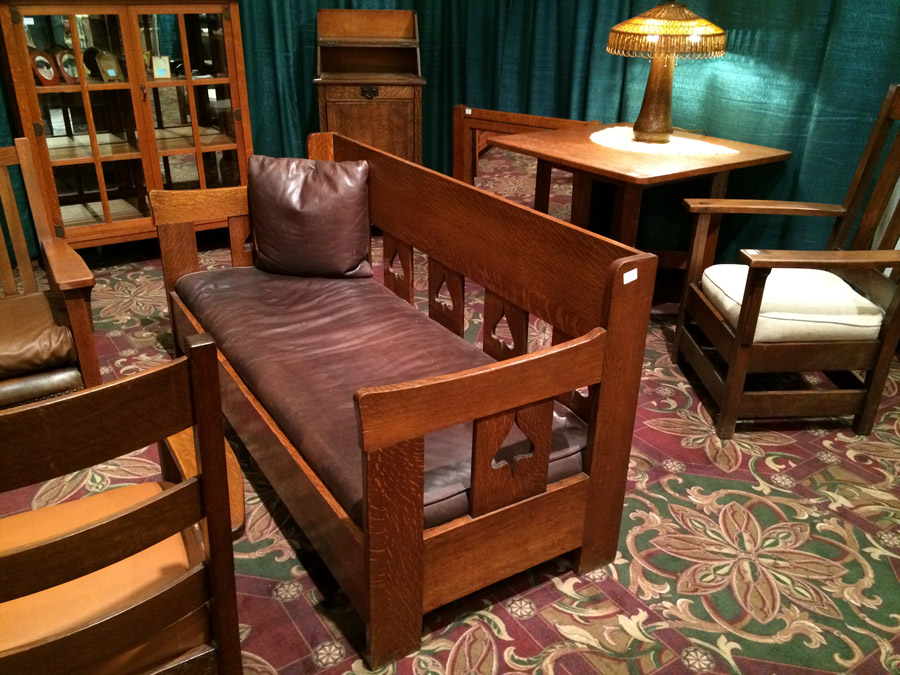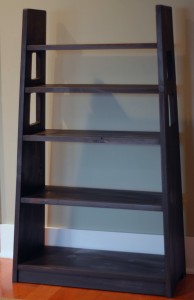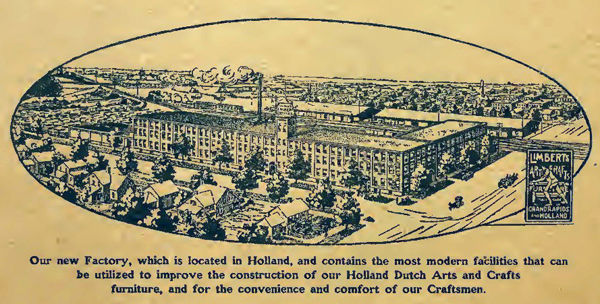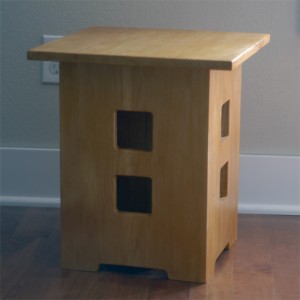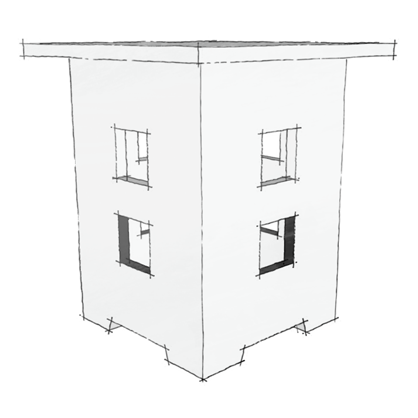One of the benefits of attending the Arts & Crafts conference at the Grove Park Inn earlier this year was being able to see a lot of period furniture in person. Although I wrote a book on Limbert’s furniture, I haven’t had the opportunity to see much of it in the wild, a deficit I was able to close at the Grove Park Inn. The Inn itself features a fair amount of Limbert, and there were some fine pieces offered for sale in the dealers’ room, including this early settle.
Tag Archives: Limbert
Charles Limbert Bibliography
I’m posting a short bibliography concerning works related to Charles Limbert and the Company he founded in advance of my 22 February talk on “The Mysterious Mr. Limbert” at the 2015 Arts & Crafts conference in Asheville, NC.
Limbert No. 346 Magazine Stand–Variations
I recently finished a simplified version of Limbert’s No. 346 Magazine stand (read more here) and have been thinking about variations on the design. This take is itself a variation, simplified to take advantage of dimensional stock and pocket-hole construction, but there’s more opportunity for increasing the stand’s utility.
It’s an attractive design, but the trapezoidal shape means you lose some storage at the ends of the shelves and the shelves become shallower towards the top. These limitations are the main reason I opted for a rectilinear design when building shelves for my office. Too, the short vertical spacing between the last few shelves means you won’t be putting any tall books on them. As it is though, it makes an attractive display stand or a fine shelf if you don’t own many books. If I were to build it again, I think I’d use the original depth to keep the extra width on the upper shelves. I’d also think about eliminating one of the shelves to allow for more spacing between them, a decision that entails altering the position of the cutouts in the sides. Continue reading
Limbert No. 346 Build on popularwoodworking.com

The cutouts and sloping sides of Limbert’s No. 346 Magazine stand distinguish it from more pedestrian offerings from other makers.
Limbert Furniture Design
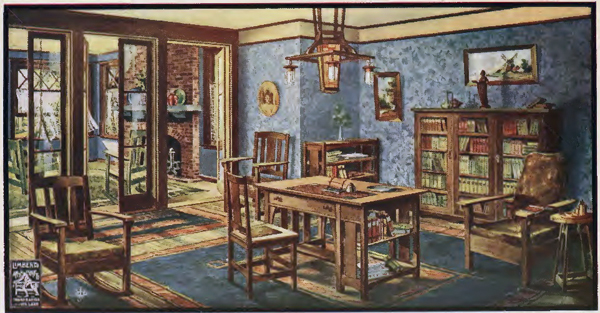
An illustration from one of Limbert’s booklets showing a library furnished with pieces by the company.
Limbert is often dismissed as a copyist of more capable designers, but at his best, he was a capable synthesist, combining diverse elements from European, American, and Japanese design into striking (and sometimes strikingly modern) forms. The sources for his inspiration are wide ranging. His earliest Arts and Craft line shows a debt to the architect Charles Voysey, Dutch folk forms, and Art Nouveau. The later line shows Limbert’s familiarity with the Craftsman furniture produced by Gustav Stickley, the Prairie Style of Frank Lloyd Wright, and the work of Charles Rennie Mackintosh and the Vienna Secessionists. The exposed joinery, rectilinear forms and visual mass of this furniture would not be out of place in the offerings of the many manufacturers responding to the increasing popularity of Craftsman furniture. Some of these designs match or exceed Stickley’s. Continue reading
Limbert Furniture Company
After years as a traveling salesman of furniture and a failed manufacturing partnership, Limbert founded the Charles P. Limbert furniture company in 1894 and spent the rest of the decade building it. By the turn of the century, his reputation as a furniture salesman was well established–the April 1901 Furniture Record called him the “furniture commission man.” That skill earned him several prominent contracts, including the Patlind Hotel in Grand Rapids, the Grand Canyon Hotel, the Mission Inn (Riverside, CA), and the Old Faithful Inn in Yellowstone National Park. Continue reading
Charles P. Limbert

Charles Limbert (1854-1923) was as interested in the business of selling furniture as in advancing the ideals of the Arts & Crafts movement.
Limbert was born in Logansville, Pennsylvania, and grew up in Akron, Ohio. After a brief detour in the carriage trade, he followed his father into furniture sales. He began as a traveling salesman, working for different companies in the Midwest including Monk & Roberts and the John A. Colby Company. During this period, he met Philip Klingman, another salesman. The two agreed to represent each other’s wares, reducing the size of their territories. The agreement marks the beginning of an extended partnership and shows Limbert’s willingness to experiment with how he did business. Continue reading
September is Limbert month
To celebrate the release of my new book (available on Amazon), I’m declaring September Charles Limbert month, featuring posts here and at popularwoodworking.com dedicated to the life and work Limbert.
Limbert No. 234 Side Table–Construction
I’ve admired the No. 234’s design for some time, but at 18 inches, it seems a little short for a side table. Before committing to white oak or cherry for my final project, I rehearsed the build in pine. Since the wide board I picked up had some nice quarter-sawn figure along both edges, I took some time cutting around knots and glued up the top and base. While my panels dried, I prepared the template, laying out the pattern on a piece of plywood and building a quick frame sized for the square cutouts. Using a template for the cutouts on the template requires substantially less time than drilling out the corners of each cutout, sawing close the line and sanding and filing to final shape. Continue reading
Limbert No. 234 Side Table–Design
The No. 234 features the square cutouts found in many of Limbert’s designs (see also the No. 367 bookcase). Here they echo, in negative form, the square top. The 16-inch top is centered on a 12-inch columnar base. At 18 inches high, it is shorter than the usual height of side tables, but two together make an interesting alternative to a coffee table. A tapered notch forms two feet on on each side.

